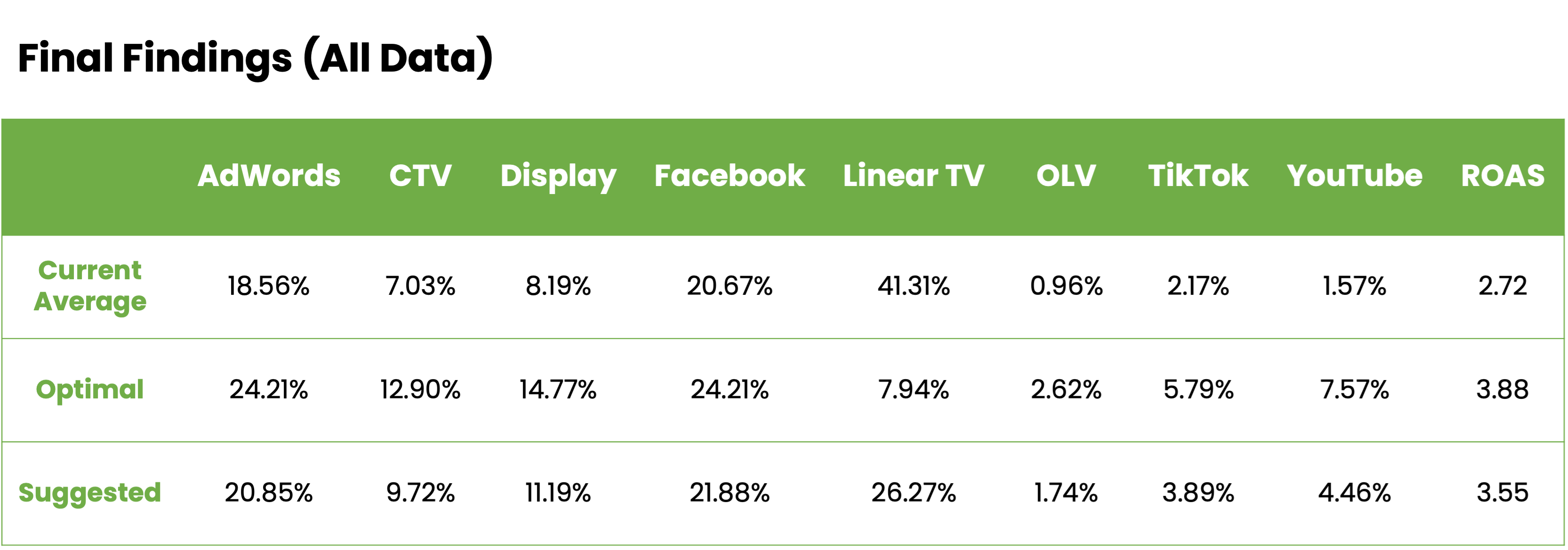The Future Has Started To Look Different
There’s an old advertising adage that half of your advertising works, but the trouble was in knowing which half. For the last decade and a half, online-only advertisers were able to scale businesses quickly by knowing more clearly what was working and what wasn’t, and it seemed like increased granularity was the future of all ad execution. But the massive loss of ID-based attribution over the last few years makes the future much more uncertain.
With increased scrutiny around privacy issues from both consumers and regulators, and most importantly Google’s cookieless timeline update and Apple’s deprecation of unique identifiers for mobile apps and third-party cookies for the mobile web, advertisers are increasingly pessimistic about understanding which of their marketing efforts are really driving sales and other desired results.
Attribution Has Always Been a Challenge for Offline Advertisers
This change has been especially problematic for internet marketers, who have traditionally relied on ID-based attribution to measure the effectiveness of their campaigns. But in reality, attribution has been an ongoing struggle for more “offline businesses, because there is no native tracking built into traditional media like TV and print. You could estimate impact on simpler media buys, or use codes and timestamps to estimate, but it has never been straightforward.
But There’s a Solution
Thankfully, new technologies are emerging to help solve the attribution problem for both online and offline advertisers. Inuvo’s Media Mix Modeling, which uses powerful AI to understand the unique contribution of all marketing efforts and suggests changes to investments in order to maximize return on investment (ROI).
Our technology uses machine-learning algorithms to analyze data from various sources, such as website analytics, social media, and CRM systems. By using this data, Inuvo’s Media Mix modeling can understand the impact of different marketing efforts, including online and offline campaigns.
A Real-Life Example
Let’s look at an example of how this works in practice. Below is the pre-optimized media mix for one of our clients.

Channels Aren’t Independent
It’s tempting to think of these channels as independent customer paths—a customer watches a TV commercial and buys the product they see, or searches about a local service on Google and calls the business, and so on. But in reality, all channels are interdependent and most consumers will have multiple touch points. A customer might view a TV ad, then do a Google search for reviews, then visit Amazon to buy. Or they might go to Best Buy and look at a product themselves before deciding to purchase.
Every channel exerts influence on the other channels and pure conversion based attribution systems were never good enough to identify this, even when cookies and UDIDs worked predictably.
What makes things so complex is that channel influence happens slowly and subtly. The effects of television or radio ads might take a few weeks to reveal their value, so the lower funnel channels can effectively “steal” their credit to advertisers that get hyper-focused on single-channel attribution.
But the Connections Can be Seen
The good news is that it’s possible to identify the influence of one channel on all others. It is complicated to do, but the right analytical approach reveals what is going on behind the scenes.
By analyzing subtle fluctuations and seasonality in marketing efforts over a long period of time—90 to 365 days—we are able to identify patterns of influence that aren’t obvious in any given week. Here’s how it works.
-
- Past data fluctuations allow us to identify the real influence of campaigns.
- We then simulate alternative mixes to model sales and ROAS using alternative mixes of spend / effort.
- We identify a set of running conclusions about how mix can be improved, including:
- Which channels should be dialed back—and by how much—assuming the same budget.
- Which channels should be increased—and by how much—assuming the same budget.
- Where to push incremental budget / effort, assuming an increase is possible.
The benefits of adjustments compound. By taking money going to less effective channels and reallocating it to a more effective channel, advertisers can see huge improvements.
The recommendations for better mix:

As you can see here, our technology suggested a large drop in linear TV and an increase in almost everything else. The resulting ROAS projection was an increase of 40% in the optimal case, and around 30% with a more conservative change.
Why Suggested is Better than Optimal
Both cases represent a massive increase in overall efficiency, but it’s worth taking a second to talk about why the suggested solution appears to be worse than the optimal solution.
The largest change in the optimal model was a reduction in linear TV from 41% to around 8%. This might end up being the actual best allocation, but the suggestion is so far out of the known range for spend that it could be somewhat overconfident.
Think of it like a map during pioneer days. Our model suggests that there will be better and more fertile land 200 miles away, but the map there is totally unknown. So as an incremental step we plan for a trip 100 miles away, knowing that we can always go further.
The suggested model works as a sort of buffer layer against the unrestrained confidence of the optimal model. The suggested model is more aware of the boundaries of our knowledge – where the map ends, so to speak – and imparts some amount of reasonable caution to make sure we don’t overstep. After all, there isn’t that large of a difference in performance between suggested and optimal, and suggested is just safer.
Going forward, we still suggest a bit of random variation in spend – continued exploration to continue the map metaphor – because we need to continue to understand the limits of our knowledge. We can help identify ways to be strategically random in order to do just that and to continue to optimize mix.
Let’s Work Together
While the loss of ID-based attribution has created several new problems for advertisers, these are not new problems. Now, we can help advertisers solve these problems with real, ongoing, tactical advice about media execution.
If your company has struggled to know which investments of time and resources are most worthwhile, we can help. Schedule an introductory call with us, and we can discuss our process and how we can provide the insights you need.






